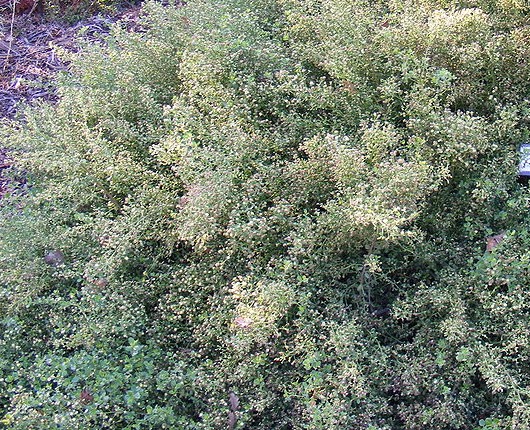
Called fuzzy wuzzy by early pioneers because of its fluffy, tufted seeds, this West Coast native was important to the Indians who used its leaves to reduce swelling and its wood to make arrow shafts and houses. No one knows for sure why it is called coyote brush but theories abound and include its ability to adapt to many different habitats, its range is similar to that of the coyote, the seed pods resemble a coyote’s fur, and that it appears where coyotes urinate. Take your pick or think up reason of your own.
The plant grows up to two feet tall and has glossy, evergreen, green leaves that are fire-retardant. Male and female flowers appear on separate plants from summer into fall and are an important source of nectar for bees, predatory wasps, and butterflies. Male plants are preferred for landscaping because female plants produced messy seed pods. Drought and salt tolerant, a coyote plant can grow in many climates and soil types but prefers full sun and well-drained soils. It only needs watering during hot, dry summers. A good choice for a ground cover, xeriscapes, soil stabilization, and wildlife, native plant, and coastal gardens. Two cultivars are available: ‘Twin Peaks’ with smaller darker green leaves, and ‘Pigeon Point’ with lighter green leaves.
Type: Evergreen shrub and groundcover
Height: 2′
Bloom Color: White or yellow
Bloom Time: Summer into fall
Size: 2’ H x 6-10’ W
Light: Full sun to dappled shade
Soil: Average, well-drained; tolerates drought, salt, fire
Hardiness: Zones 8-10
Photo Credit Wikipedia
.